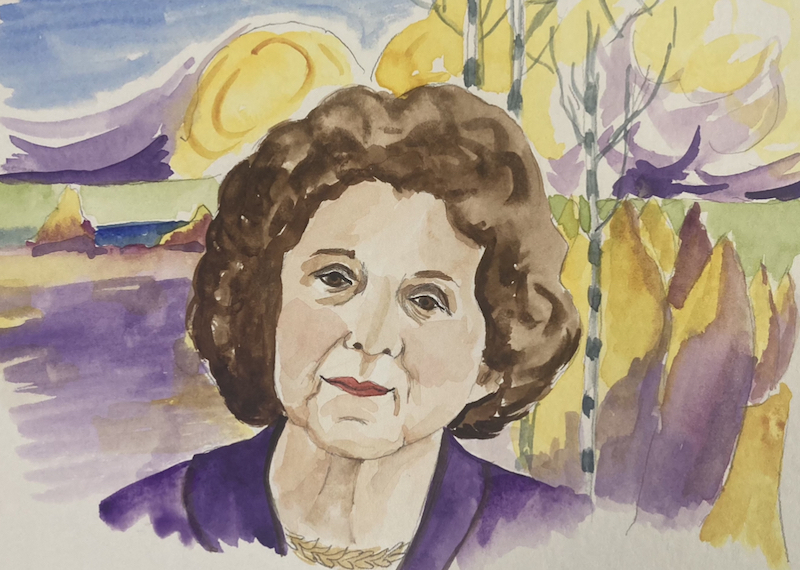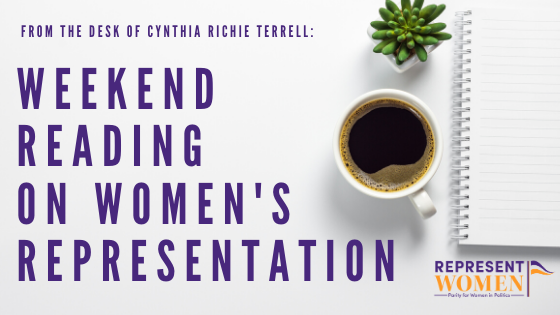
Weekend Reading on Women’s Representation is a compilation of stories about women’s representation in politics, on boards, in sports and entertainment, in judicial offices and in the private sector in the U.S. and around the world—with a little gardening and goodwill mixed in for refreshment!
The first Earth Day was celebrated 52 years ago and was intended to raise awareness about threats to the environment in the United States, since then the day has grown to include calls for action to address a changing climate around the globe. Women have always been at the heart of the movement, from Rachel Carson, whose seminal work Silent Spring introduced generations of lawmakers to the dangers of pesticides, to Greta Thunberg, whose climate activism has challenged world leaders to work harder to protect the planet, to young women like my daughter Becca Richie, whose work with Climate Clock provides a clear and urgent timetable for action.
Millions of women are leaders in their communities on climate issues, here are some of their stories as told by Candace Helfand-Rogers:
Climate change is real, and it’s here. Thankfully, so are women.
Other major world events have been dominating our headlines recently – namely the ongoing war in Ukraine and the global pandemic that’s surging once more. But global warming is already at our doorsteps, and desperately needs our attention — and action — as well. A recent United Nations report grimly states that we are “firmly on track toward an unlivable world.” Erratic weather patterns, wildfires, hurricanes and floods are already showing us shades of what that world will look like.
While our governments seem sidetracked, ordinary citizens, elected officials and organizations around the world continue to sound the alarm. Folks like those at Extinction Rebellion engage in regular acts of civil disobedience throughout the world to draw attention to the problem at large, with groups like the Climate Emergency Fund funneling money toward such efforts. New York Rep. Alexandria Ocasio-Cortez has sponsored a Green New Deal – a broad public policy proposal crafted by Rhiana Gunn-Wright that seeks to address climate change from several directions. Activists like Greta Thunberg and Vanessa Nakate have created major platforms of their own and inspired a generation of young eco-warriors.
Women are often front-and-center in these call-outs and actions. That’s why we’re taking time this Earth Day to celebrate entrepreneurial women who have dedicated their lives, and work, to combating climate change.

Forty-five women have served as governor in the history of the United States, including New York’s Kathy Hochul who was sworn in on August 24, 2021, just minutes after the former governor stepped down. Hochul is now running for reelection while modeling a new style of leadership in Albany and across the state, according to this piece by Jessica Bennett in The New York Times:
After taking office, Ms. Hochul moved quickly to change the temperature in the Capitol. She converted Mr. Cuomo’s office into a conference room and replaced a sculpture of what she described as “a man beating a horse with his gun” with suffrage posters and a tribute to Sojourner Truth. And she turned up the thermostat more than 10 degrees.
She made more substantive changes, too. She named a number of prominent women to her executive staff and has appointed more women to her cabinet than any governor in New York State history. She sat down with her commissioners, positions that Mr. Cuomo famously micromanaged, telling them: “I don’t need to give approval for everything. Bring me great ideas. I’ll back you up.” She created an H.R. department for the executive chamber and set up an anonymous sexual harassment hotline. She had listening sessions and one-on-one meetings, and regularly holds all-staff meetings. She finds “common ground,” according to Senator Kirsten Gillibrand. She even says “thank you.”“She’s not a creature of Albany, right? And that serves her well,” said Karen Persichilli Keogh, the secretary to the governor, which is the highest-ranking appointed position in the state. “No disrespect to those who are, but she sees the world very differently.”
And yet for all of that incremental progress, for all the fresh perspective she may bring to a workplace or a room, the Benjamin scandal is a reminder that culture is hard to change. One woman can’t transform New York politics overnight. The fact that many voters expect her to is perhaps even more evidence of the precarity of what a female politician still has to endure. Even though Mr. Benjamin was said to have “repeatedly lied” during the vetting process, that may not matter to voters who simply see a Hochul administration scandal.
And so, Kathy Hochul finds herself one step closer to the edge of that glass cliff.
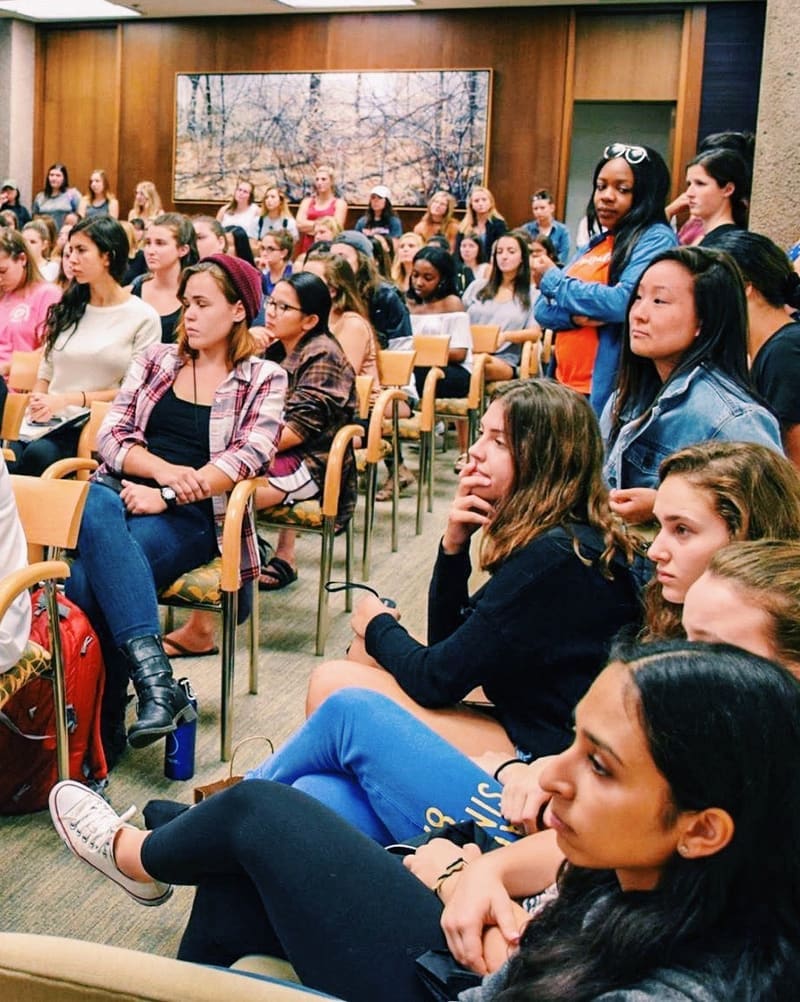
New York state is also home to The Women’s Network that was founded on the campus of Syracuse University and has now spread to almost 150 colleges and universities across the United States and Canada—read more here:
The Women’s Network is currently the largest collegiate women’s networking organization in the nation. Founded in 2017 by then-sophomore Jamie Vinick, the original SU chapter now boasts a membership of dozens of students. The 17-member e-board, led by sophomore Jaya Patel, hopes to continue creating a welcoming network of professional women who represent a range of academic and cultural backgrounds at SU.
Patel joined The Women’s Network the summer before her freshman year and first worked as a blog writer that spring. She then served as vice president the following fall, which Patel said is when she was inspired to apply for presidency after getting to know the different board positions a lot better.
Patel said making connections with women that were as ambitious as herself was really important to her. Watching then-president Summer Cerbone at work cemented her decision to run for the president position.
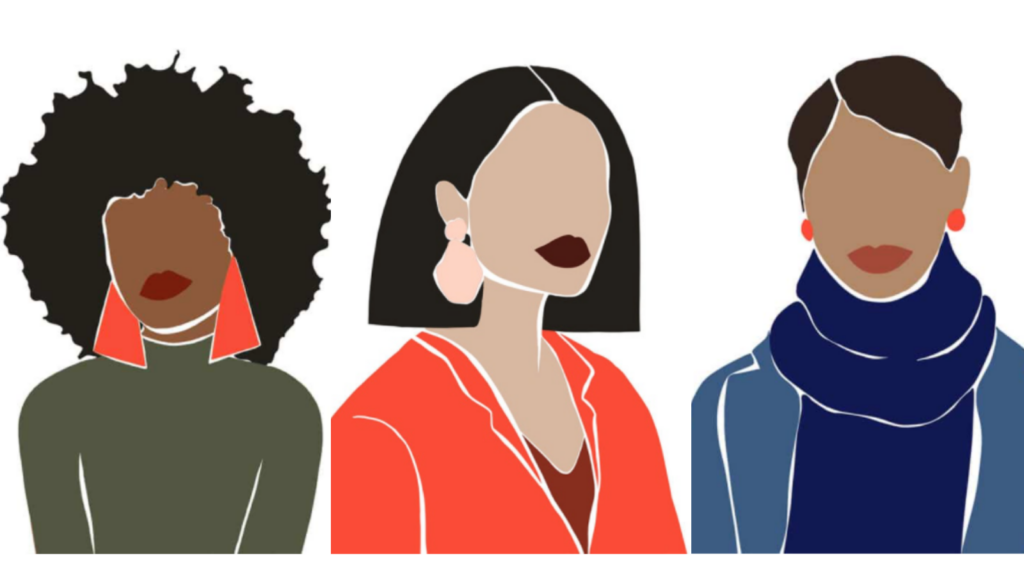
Katelyn Fossett, associate editor of Politico, wrote about a new report from the Women’s Business Collaborative that tracks the best practices to increase women’s representation on public and private sector boards:
With many women still not returning to work after Covid-19 lockdowns and many of them still reporting high numbers of burnout, it can be difficult to find reasons to be optimistic about the state of women in business. But here’s one: A recent report from the Women Business Collaborative (WBC) and 50-50 Women on Boards found that 2021 was a “watershed year” for women on corporate boards, with the largest ever year-over-year increase in board seats held by women among companies in the Russell 3000, an index of the 3,000 largest publicly held companies incorporated in America.
According to the report, which was released earlier this month, women held 27 percent of board seats at companies on the Russell 3,000 in 2021, up from 24 percent in 2020. Another sign of progress, according to the report: Black board membership increased 32 percent.
Here are a few other takeaways from the report.
Private companies fall behind public companies on gender diversity. According to the report, 86 percent of board director seats at private companies are held by men, and 56 percent of early-stage private companies had no woman directors.
To get more women on boards, it’s helpful to have a woman CEO. The average percentage of women on boards of companies with a female CEO is 39 percent, while it is 26 percent for companies with a male CEO, according to data analyzed by 50/50 Women on Boards in the report.
Female board chairs help, too. According to a survey by the Lodis Group, which is included in the report, women board chairs have a significant impact on boards’ gender diversity. The survey found that boards with a woman chair had 42 percent women directors, compared to 24 percent on boards with a man chair. “Some of the decisions that get made about the board of directors will be more diverse … because if women [board chairs] have women networks, they can say, ‘Oh, I know a woman here,’” Gwen Young, COO of WBC, told me. And there will be benefits not only to downstream diversity, she says, but also to the company’s bottom line. “There is evidence that when you have more diversity in company leadership, profits will grow, and that’s the same for having women on the board,” she said.
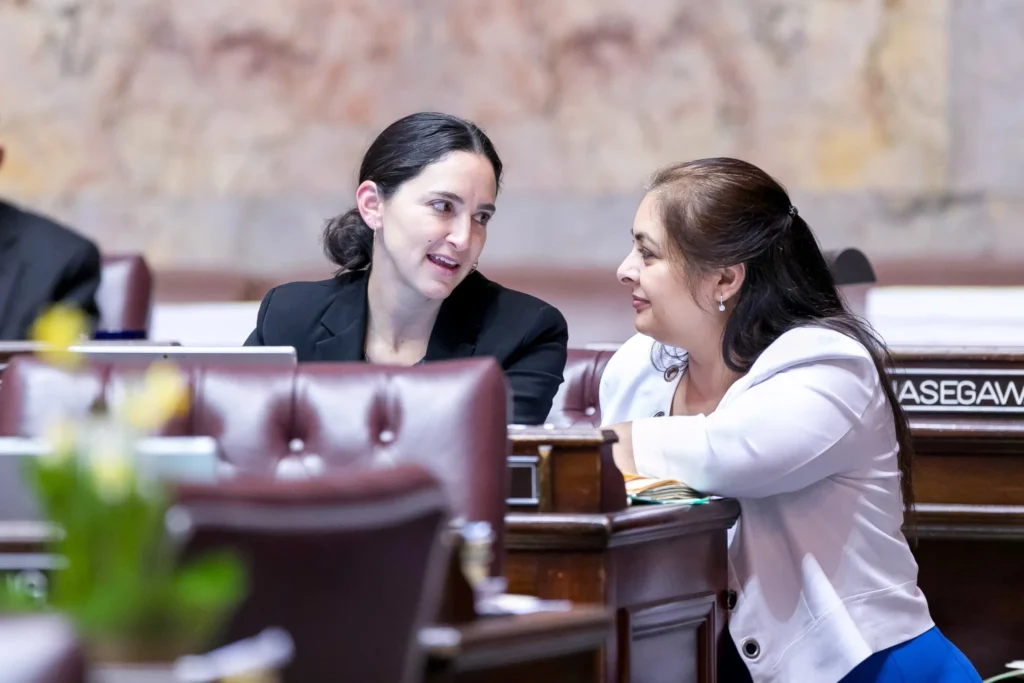
Washington state senators Rebecca Saldana and Manka Dhingra co-wrote this piece in The Seattle Times about their work in the legislature and the importance of inclusive policy-making:
Overall, a mere 9.2% of members of Congress are women of color.
In state legislatures, that number is even lower — an anemic 8.2%.
These numbers remind us how fragile our progress still is and how long a road lies ahead before our government reflects the diversity of the governed.
In the Washington state Senate, where the two of us serve, we are steadily making progress toward greater representation. Since 2018, we have doubled the number of women of color in our ranks twice — from one to two in 2018, and from two to four in 2019. Since then, we have welcomed two more, increasing our ranks to six of 49 state senators.
Why do these statistics matter? Women of color are not just joining the Legislature, we’re changing it. As co-deputy majority leaders, we are changing the dialogue. We are bringing in a new culture, a newly collaborative and inclusive approach to a body that is steeped in tradition and slow to change.
We’re already making a mark on what gets done and how, putting collaboration and inclusion first. Nearly 95% of the bills passed in the Legislature this year were bipartisan. A mere 17 bills passed on party-line votes. That’s the result of a culture that begins with listening. During debate on one of those party-line bills, Senate Minority Leader John Braun said that, despite the fact that he was not going to vote for the bill, he appreciated the inclusive process that had incorporated feedback from both parties and reshaped the bill: “I appreciate the effort to find some common ground, to try to improve the bill by listening, in this case, across the aisle, and I will end with just a simple ‘thank you’ for that effort.”
It doesn’t matter where the idea comes from: good policy is good policy.Good governance starts with access to democracy. First and foremost, a responsible government safeguards the sanctity of the most fundamental right in a democracy: the vote. Only if everyone has equal access to the ballot box can everyone have equal access to the halls of power. When one of us was elected in a special election in 2017, and Democrats retook control of our state Senate, the first thing we did was pass a package of laws that made Washington a national leader in strengthening voting rights — work we have continued in the following years.
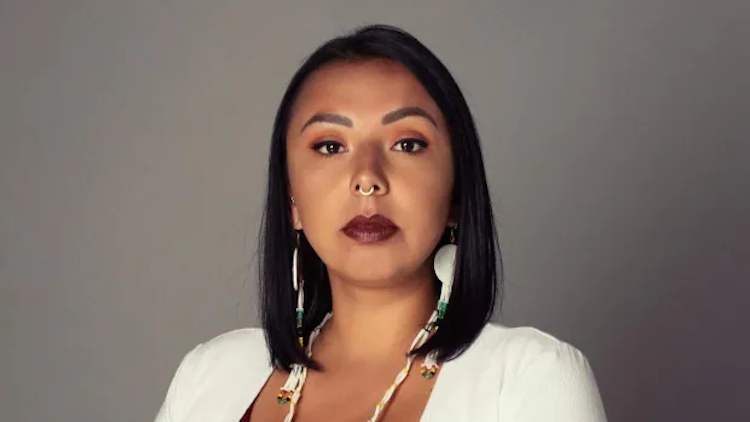
Kyra Wilson has become the second woman to have been elected chief of the Long Plain First Nation, according to this story:
According to unofficial results posted on the community’s website, Kyra Wilson was elected to the position over the weekend, edging out David Meeches by 12 votes.
The 35-year-old Wilson, a therapist and former social worker, will become the second woman to hold the role since the 1970s.
“It’s been surreal and the amount of support and people reaching out has been a beautiful experience,” Wilson told Global News. “I feel honoured to be able to sit in this role.”
Wilson says focusing on mental health and child welfare are some of her priorities in the role along with getting the community back to what it means to be Anishinaabe and Dakota.
She says hopes to honour and learn from the first female chief, Marlene Peters, in inspiring young people.
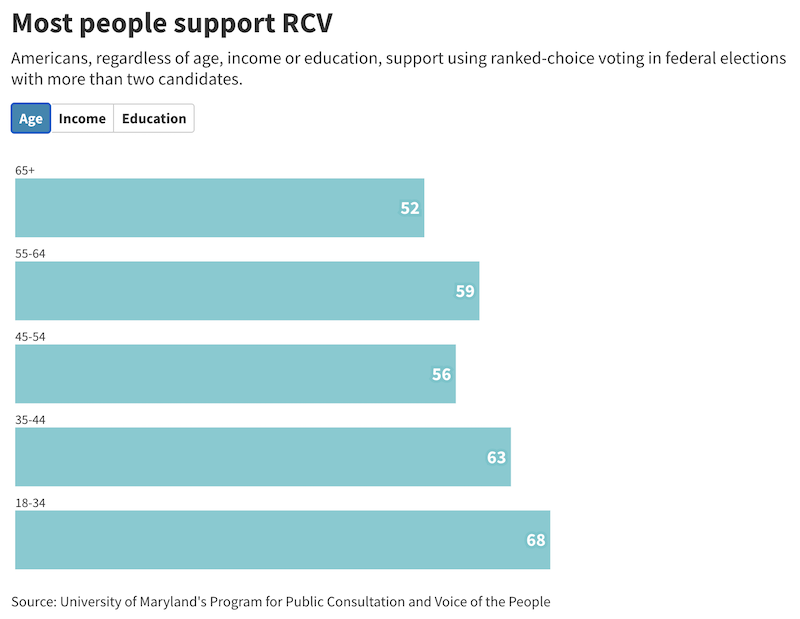
According to this piece in The Fulcrum, the majority of Americans support the use of ranked-choice voting in federal elections based on a new poll conducted by the University of Maryland’s Program for Public Consultation and Voice of the People:
More than 60 percent of Americans favor using an alternative method of casting ballots known as ranked-choice voting for federal elections, according to polling data released Wednesday morning.
RCV, also known as an instant runoff election, has already been used statewide in Maine, for municipal elections in New York City and in more than 40 other jurisdictions. Alaska will use ranked-choice voting for the first-time this summer in a special election for a vacant seat in the U.S. House of Representatives.
While there is a partisan divide over RCV, with 73 percent of Democrats and 55 percent of independents in favor of its use, virtually half (49 percent) of Republicans also support ranked elections, according to the poll, which was conducted by the University of Maryland’s Program for Public Consultation and Voice of the People.
When conducting the survey, pollsters described ranked-choice voting and then presented arguments for and against. After taking respondents’ temperature on each of the arguments, they asked a final approve/oppose question, and 61 percent said they approve of RCV for federal elections with more than two candidates.
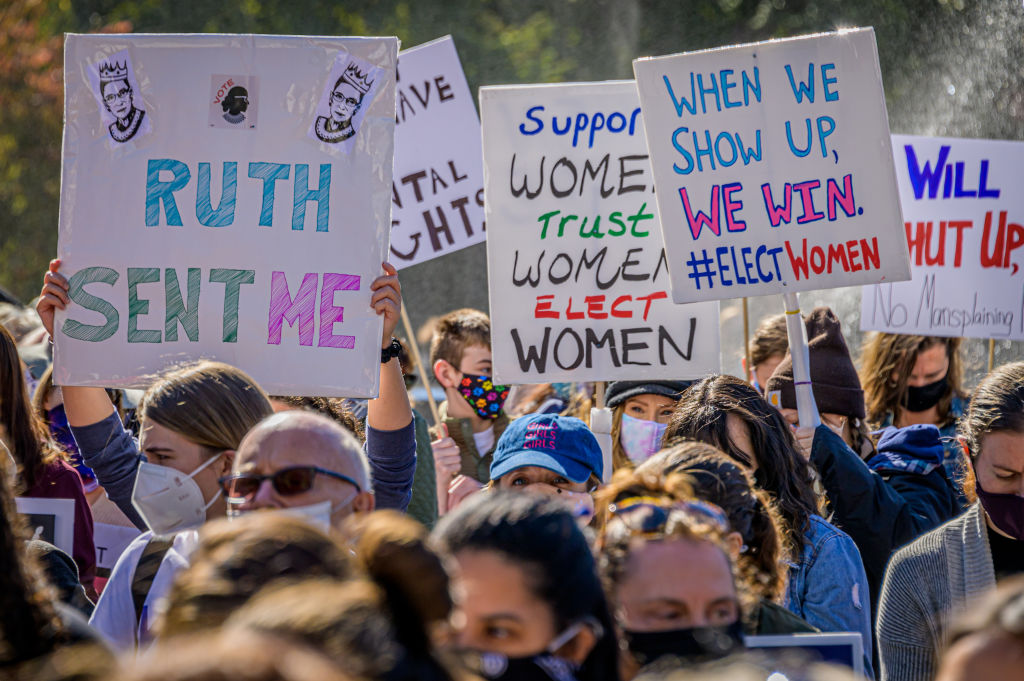
FairVote’s Rob Richie writes about why he is a passionate supporter of the Fair Representation Act, on the new DemocracySOS platform. (Subscribe to follow the latest news from the world of electoral reform.)
I’ve wanted to replace winner-take-all elections in the United States for more than three decades. In 1990, proportional voting already was the international norm among established democracies, and nearly every emerging democracy in Eastern Europe and Latin America was rejecting US-style winner-take-all elections. I wanted a politics where our public debates were enhanced by having more voices at the table, and you could join with like-minded allies to earn a fair share of seats grounded in the power of your ideas: 51% wins a majority, but 20% wins about a fifth of the seats.
Today, far more Americans support proportional voting. More thought leaders recognize that nearly all of us lose out in today’s sectarian winner-take-all world, one in which the parties have entered a death spiral that leaves huge problems poorly addressed or completely ignored. The status quo is unsustainable.
Ordinary Americans are ready for big changes too: a U-Maryland national poll released this week found that 61% of voters favor using ranked choice voting in general federal elections, with majority support in deeply Republicans and deeply Democratic districts.
So what do we do? On April 19, I joined Harvard’s Archon Fung and Danielle Allen and former Utah state legislator Rebecca Chavez Houck for a rich conversation headlined Beyond Winner-Take-All: Possibilities for Proportional Voting in the United States. You can watch the webinar online. Archon’s first question to me was what form of proportional voting I support for the United States.
My youthful answer would have been Germany’s mixed-member proportional system. As I’d learned about the many forms of PR around the world, the German approach — one that combines American-style single-seat districts with “compensatory seats” to ensure that overall seat shares reflect voters’ party preferences — represented an elegant compromise between those seeking local representation and those wanting party fairness.
And why not? Americans had played a huge role in establishing mixed-member PR in post-war Germany, and it has taken off as a model in familiar democracies like New Zealand and Scotland.
That’s why in 1991 I excitedly mailed (no emails yet!) my first published oped on the German system to the venerable Electoral Reform Society in the United Kingdom. A few weeks later, I received a stern letter from Enid Lakeman, the legendary 87-year-old British reform champion. While appreciating my enthusiasm and connection to my great uncle George Hallett, a pioneer in proportional representation advocacy (and a good subject for a future post), she chided me for backing Germany’s model. The one form of proportional representation I should support, she wrote, was the single transferable vote, which the Society had championed since the days of one of its great backers, political philosopher John Stuart Mill. I confess to some youthful eye-rolling in response.
So what was my answer to Archon this week? Why, that the United States should adopt Enid’s favorite, the single transferable vote – that is, the proportional form of ranked choice voting, as reflected in Congressman Don Beyer’s Fair Representation Act.
I haven’t watched the new show on the First Ladies that debuted this week but am looking forward to it!
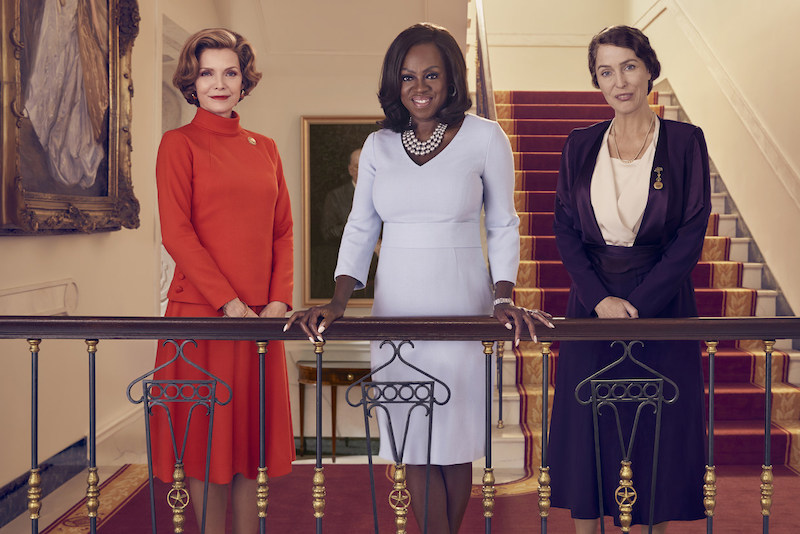
Hyacinth, jasmine, fern and viburnum are in bloom in my garden.
That’s all for this week,
Cynthia
Up next:




